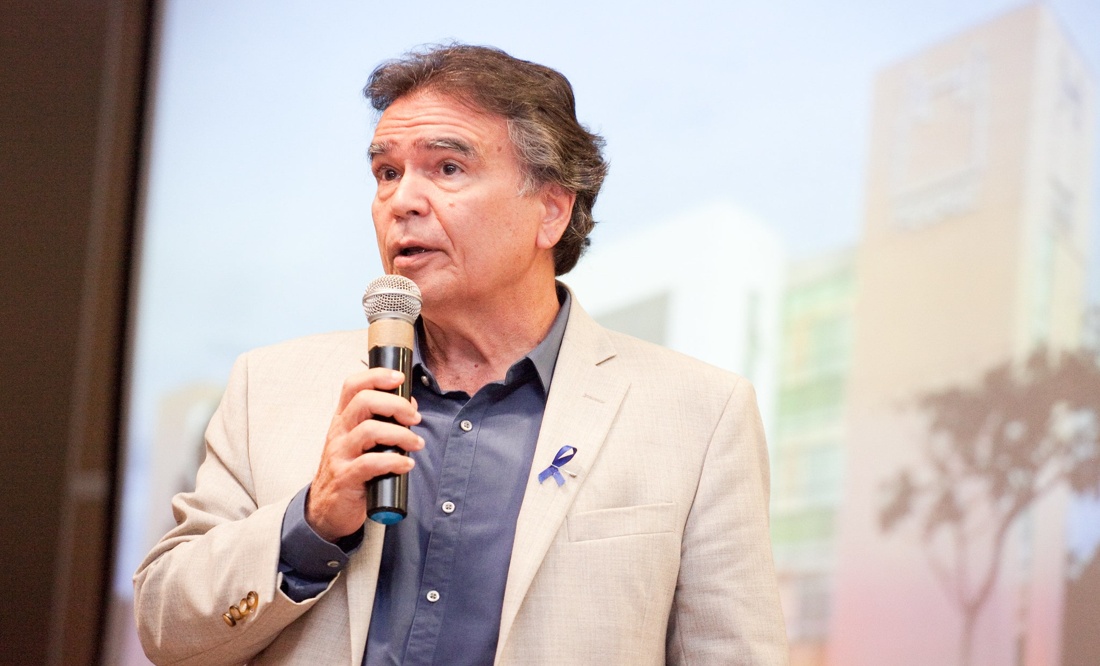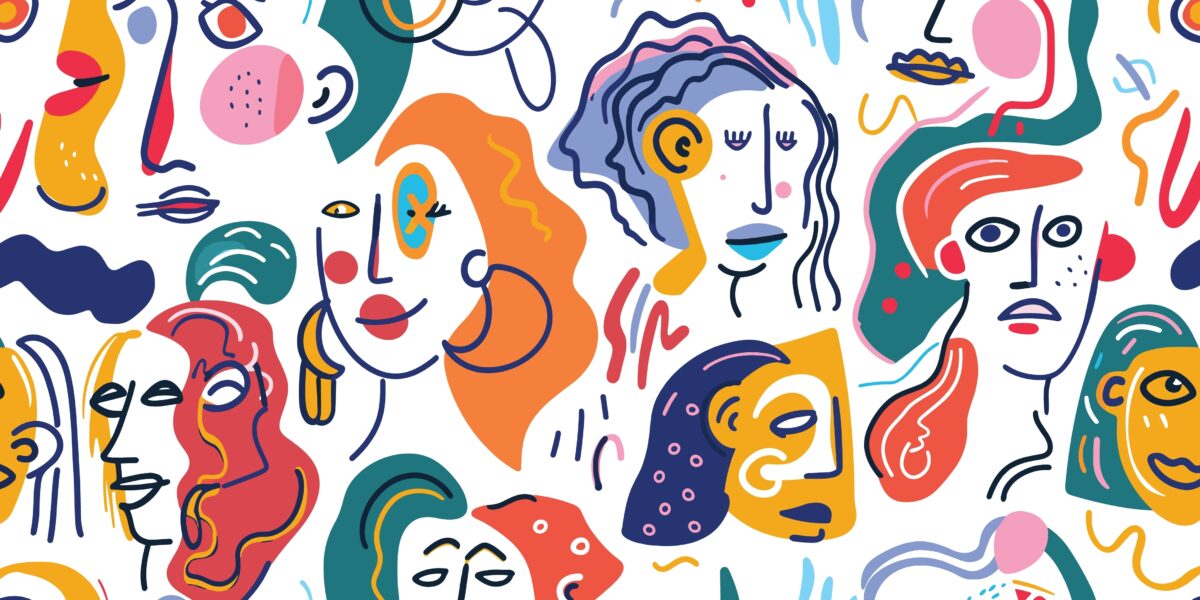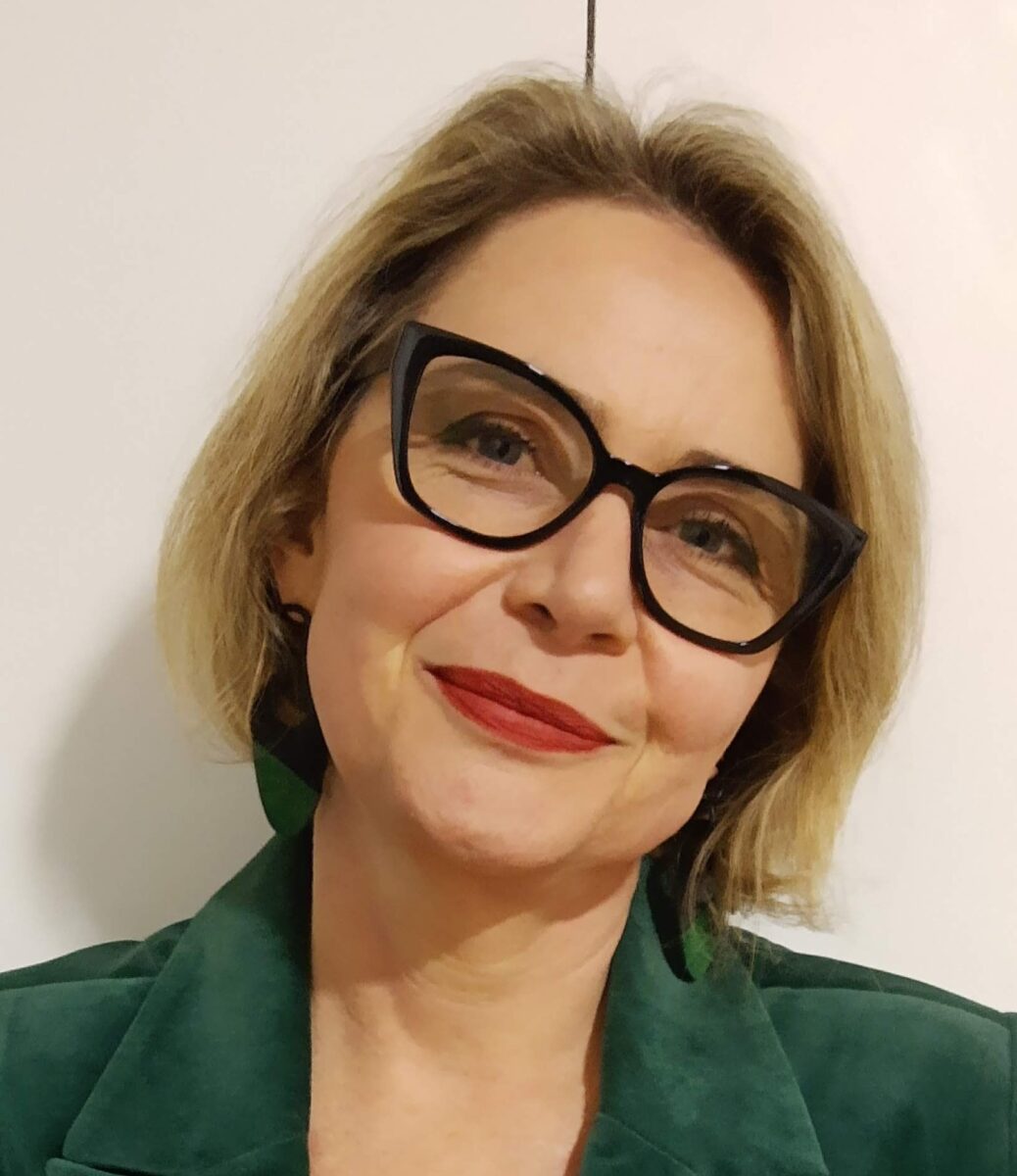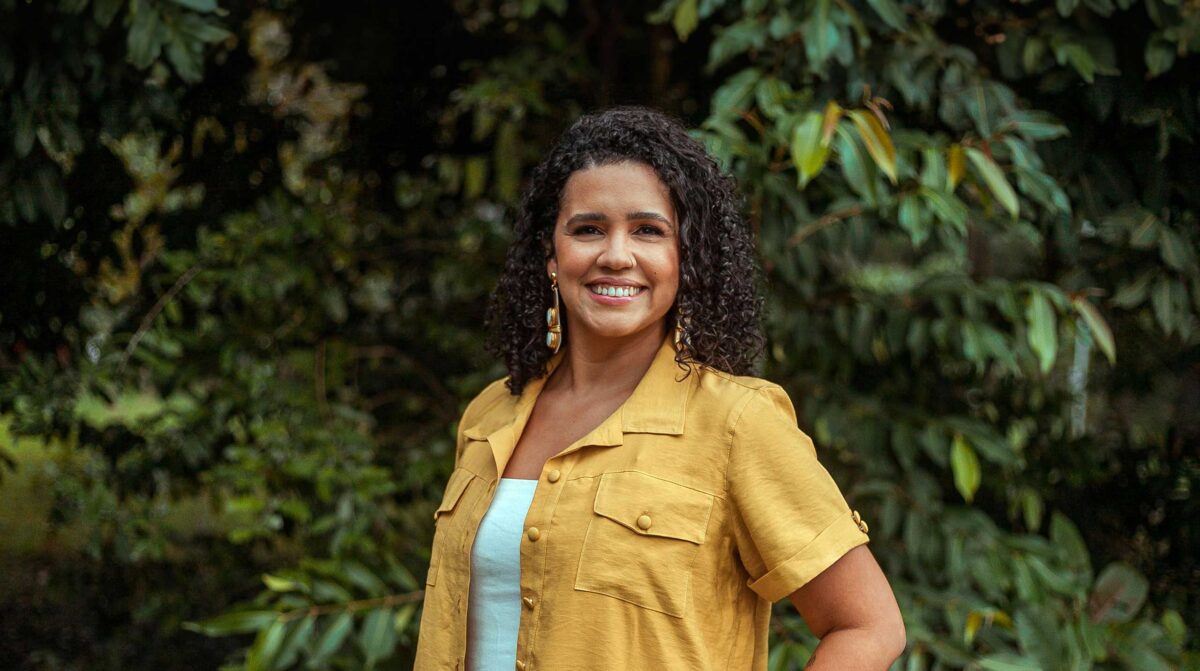 #Interviews
#Interviews
Suffering in women with aesthetic symptoms
According to anthropologist Fabíola Rohden (UFRGS), the diagnosis, treatment, and perception of polycystic ovarian syndrome are strongly associated with traditional beauty standards
 By analyzing comments and images posted to Facebook, anthropologist Fabíola Rohden, of the Federal University of Rio Grande do Sul (UFRGS), observed that the diagnosis, treatment, and perception of polycystic ovarian syndrome are currently associated with aesthetic factors. According to her, this phenomenon is linked to the traditional gender binary system, centered on bodily differences | Illustration: Shutterstock
By analyzing comments and images posted to Facebook, anthropologist Fabíola Rohden, of the Federal University of Rio Grande do Sul (UFRGS), observed that the diagnosis, treatment, and perception of polycystic ovarian syndrome are currently associated with aesthetic factors. According to her, this phenomenon is linked to the traditional gender binary system, centered on bodily differences | Illustration: Shutterstock
In an article published in February in Ciência e Saúde Coletiva, the research group led by anthropologist Fabíola Rohden, who is a member of the Anthropology of Health and the Body Research Group at the Federal University of Rio Grande do Sul (UFRGS), discussed the impact of polycystic ovarian syndrome (PCOS) on adolescents and women of childbearing age, based on discourse from a Facebook group with thousands of members.
PCOS is an endocrine disorder characterized by an increase in male hormone production in women. The term “polycystic” refers to the presence of several small cysts usually found on the ovaries of women with the syndrome.
The syndrome causes women to naturally produce a greater amount of male hormones, referred to as androgens. This hormonal imbalance interferes with ovulation and increases the incidence of cysts, which stem from a slight defect in the ovarian follicles where the eggs are produced. Symptoms include acne, weight gain, and the presence of unwanted hair.
Scientific analysis of the comments and images posted by women on Facebook suggests that diagnosis, treatment, and perception of PCOS are strongly associated with aesthetic factors and may be based on flawed statistical data.
Aligning the scientific storyline that emerges specifically from analyzing the syndrome along with the results of other studies, Rohden presents, in this interview with Science Arena, a framework that explains how discussions among patients on social media may “revolutionize” the relationship between patients and doctors during office visits.
There are changes that, despite eliciting a reaction among healthcare professionals, are not entirely bad, according to the anthropologist. In addition to PCOS, so-called breast implant illness, another syndrome studied by Rohden’s group, also reveals interesting insights related to the anthropology of health.
Science Arena – Why was polycystic ovarian syndrome chosen for this particular study?
Fabíola Rohden – This study is a case study within a broader research project. The case study involves developing new possibilities for bodily and subjective transformation. Or what we might define as an incessant quest to improve the body.
The diagnosis of polycystic ovaries is still controversial. They were diagnosed differently 30 years ago than they are today. If you speak with a gynecologist, she will have an understanding of the subject. An endocrinologist will have a different understanding.
The specific focus of this study was to understand how women relate to the controversial diagnosis. To this end, we use material published by women discussing the topic on Facebook. Our group has also been studying the impact of self-diagnosis and how this influences the relationship with medical specialists and treatment in general.

Is there any evidence of how “Dr. Google” is affecting the doctor-patient relationship?
It is clear that we have a relative democratization of health information. The “relative” is important because the information is often received from a source that is not reliable. And it is often interpreted quite incorrectly. Therefore, understanding how people interact with these resources is absolutely key to being able to discuss health.
In particular, there is also the issue of cosmetic surgery. Social media has been where people seek to share information. Among the reasons for doing this is to check that the information provided by the doctor makes sense, based on the opinions of other lay people. It is an incredibly complex relationship, which needs to be carefully considered.
We need to be aware of what happens in social media groups, including Facebook, Instagram, WhatsApp, and TikTok.
There’s a sense of intimacy on social media, where people feel more comfortable talking about intimate aspects of their lives, which doesn’t always happen in the doctor’s office.
Does this occur in the case of polycystic ovarian syndrome?
In the case of PCOS, we noticed, from our study of Facebook groups, some key aspects in the public discourse. The issue of fertility comes up among women who are trying to get pregnant, and they attribute their failure to the syndrome. But what appears most is the question of aesthetics. And it was because of this that we focused more on these conversations. To do this, we selected a Facebook group with 184,000 members.
Within this sample, were the patients’ comments categorized?
There are, we might say, three main themes. The first, without a doubt, is weight loss. There is an impetus. It is extremely common that women with polycystic ovaries are told they need to lose weight. It’s a discourse, as we’ve pointed out, that goes beyond healthcare. There is a moral impetus to lose weight in a society that tends to be fat-phobic, that worships thin bodies, and that associates youth with thinness.
The second topic is related to the issue of acne. In this case too, there is a need to find interventions that mitigate or correct the issue. The third theme, also related to aesthetics, is hair growth. It has no correlation to health, because the fact that you have more or less hair will not affect your health. Once again, it’s a question of gender.
Women in the group feel deeply bothered by the presence of more body hair, especially in more visible areas. When you add this to acne and the “need” to lose weight, you start to understand how PCOS greatly affects women’s self-esteem, coupled with a more general perception that the condition affects femininity as a whole. What we have observed is that the focus on suppressing undesirable aesthetic factors, which are not necessarily indicators of health problems, can in itself become a factor in the suffering experienced by these women.
How can the quality of life of these women be improved?
It’s important to highlight an aspect I deem quite relevant. What we have found, from a point of view centered on anthropology of health and the body, is how a PCOS diagnosis is heavily influenced by social dictates associated with a certain standard of femininity.
And many of these women are adolescents. Because PCOS is first noticed and diagnosed in adolescence. So, many of these women and adolescents begin an urgent quest for resources to treat this condition that often has nothing to do with a health issue.
But that clearly affects their self-esteem due to the aesthetic dimension, often influenced by femininity standards imposed by the male perspective. This is the framework. We are trying to understand and study these situations, with a greater focus on aesthetics and mental health.
Is there data on the extent of PCOS within the population?
If the diagnosis is controversial, so are the statistics. In general, it is said that between 6% and 16% of women of reproductive age have PCOS. Which is a lot of people. In the past, PCOS was traditionally addressed gynecologically and treated with oral contraceptives. We’ll leave it at that. It still needs to be investigated, although I think there’s more to it than that, but we need to investigate how many women actually have PCOS. A very large contingent of women began taking oral contraceptives very early in adolescence for a very long time because they were diagnosed with PCOS.
Was it unnecessary?
Some of the diagnoses may not have been correct. Today, there are many discussions and debates about this. The use of oral contraceptives is not harmless. They have a number of side effects, potential clinical interactions, and various contraindications due to side effects. In my opinion, it’s a very important issue that needs to be studied.
For example, a very large contingent may have taken contraceptives, and not only did it not solve anything, but it aggravated the condition or caused certain side effects.
It’s not a matter of “demonizing” the professionals but understanding this from a broader perspective. Health issues, controversial diagnoses, and the pharmaceutical industry operate in this circuit. The internet itself is part of this historical context, helping to disseminate information for both good and bad.
More for bad?
There are studies by foreign authors that show that we can now identify different types of patients. Our research is also moving in this direction.
More and more people are becoming so-called “expert patients.”
Decades ago, people had a problem, found a doctor, and there was a relationship of authority with the doctor. There was trust in medical ethics, in science. People said that “they were in the hands of that doctor.”
Now, this is much more fragmented and confusing. It is very common that before leaving the house for an appointment, you will search your symptoms on Google and try to discover something. Or you will talk with other people online and arrive at your doctor’s office an expert, already knowing how those symptoms are treated, which medication to use, and so forth.
On the one hand, this can be great and useful. It might be worthwhile for people to learn to better recognize symptoms. But, on the other hand, it produces new ways of interacting, and can breed distrust in the diagnosis.
And how do doctors respond to this? Is there a pattern?
We have been mapping this more and more. Younger doctors, in particular, are taking to social media, becoming public figures and opinion leaders. And today’s social networks also demand a mix between professional and personal life. There’s a lot of personal and professional exposure on social media.
It’s an interesting phenomenon that we’re still studying. Institutionally, what has been happening is that there are more behaviors that are reactive to social networks. We mapped some conferences and, at one of them, a doctor presented a screenshot from Facebook and said, “how are people going to react to this?” The debate was about the use of hormonal contraceptives. There are several scenarios that fit this context.
Is quality information increasingly important?
Definitely. There is a relationship with Google. But the patient may also be on social media, exchanging information with thousands of people, saying that they have a certain symptom and asking what everyone thinks. We have seen this a lot in the groups we study: “Look, this is my exam, how do I interpret it?” Many people ask this on social media.
And then a huge and varied contingent of people respond saying that the exam is similar to theirs and their doctor said this or that about the problem. Not everyone has the ability to filter all of this. That’s why I defend all the initiatives for science dissemination and communication, which are absolutely fundamental.
Are there any examples to show cases in which the internet helped?
There is an interesting example from our studies. Jéssica Brandt da Silva, an advisor of mine, did her master’s research on a condition called “breast implant illness.” It is characterized by a series of issues that women with silicone breast implants began noticing. It’s not an immediate rejection of the raw material, but a more complex, more general condition. The reactions occur over time. And, once again: it’s a very controversial diagnosis.
For the time being, more traditional medicine is finding it difficult to accept that the problem exists. But there are epidemiological studies about this. And Jéssica’s work showed how women who were experiencing this condition were reporting their problems on social media and, over the years, managed to build a clear picture that, in fact, there are thousands of other women experiencing the same symptoms and, therefore, it was necessary to fight for the syndrome to be recognized.
Reporting experiences that have a lot in common produces a summary of parallel evidence. By identifying with another person’s experience, their suffering is recognized, and they continue their search for a valid diagnosis. This recognition is very important to these women.
It is interesting that there are so many doctor’s offices dedicated to helping women get the body “of their dreams.” The dream of femininity. But we have very few professionals available to remove implants when desired and necessary. And so, we circle back to the question of gender, the complex relationship between demands for body enhancement imposed by society, the pressure of social media, and the association with medical resources and professionals and their ethical responsibility.
*
This article may be republished online under the CC-BY-NC-ND Creative Commons license.
The text must not be edited and the author(s) and source (Science Arena) must be credited.


